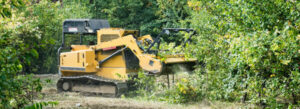Variations of Standing Russian Twist
2 min read
How to do Standing Russian Twist
Variations of Standing Russian Twist are used to teach beginners and pros alike how to grip the knife. In this way, all parties involved can benefit from the correct techniques, and the knife remains safe at all times. The basic grip consists of a V-shaped arc that extends across the top of both hands. It is important to make sure that you grasp the handle tightly, or else you will find that the knife easily slips out of your hand. Also, remember that the stronger your grip, the more control you will have over the knife, but it will also mean that you may trip over your own blade.
In general, beginners begin by having their grips comfortably loose until they feel that they can comfortably close their hands. Once they have a firm grip then they can slowly increase the amount of pressure that is exerted on the knife with each hand. As soon as you have increased the amount of gripping force, you should begin to gradually ease it out until you have achieved a balanced handgrip.
Do not grip the knife too tightly as this will negate any of the benefits mentioned above. Instead, you should allow the knuckles of both hands to overlap slightly. This slight overlap will help to create more leverage, and you can use this to pull back on the knife with greater control. Remember that the overlap should be controlled tightly throughout the whole motion.
Another of the many variations of standing Russian Twist is to grip the knife with an open hand. To do this, place the heel of your hand next to the index finger on the handle. You will then grasp the handle with the free hand, interlocking your thumb and forefinger. Once you have gripped the handle of the knife firmly, slowly move your free hand towards your body until your pinkie reaches the bottom of your right hand. You should now be able to barely feel the grip.
Once you have performed this hand exercise correctly, switch sides and perform the other hand version of the exercise. Repeat these two steps a few times in a row. Before you know it, your right pinky will be almost touching the heel of your left hand. To complete the rotation, rotate your hand once more, and then again in the opposite direction.
These are the basic positions for performing the standing Russian Twist, but there are a few other hand positions that you can try. If you are learning this Russian hand style from scratch, you may find that you can easily adjust your grip and stance to make the most of each variation. The more you practice, though, the more comfortable you will get to perform the different hand positions, and you will quickly be able to switch between all three positions for each hand. With enough practice, you should eventually be able to adapt the above positions to just about any hand position you want.







